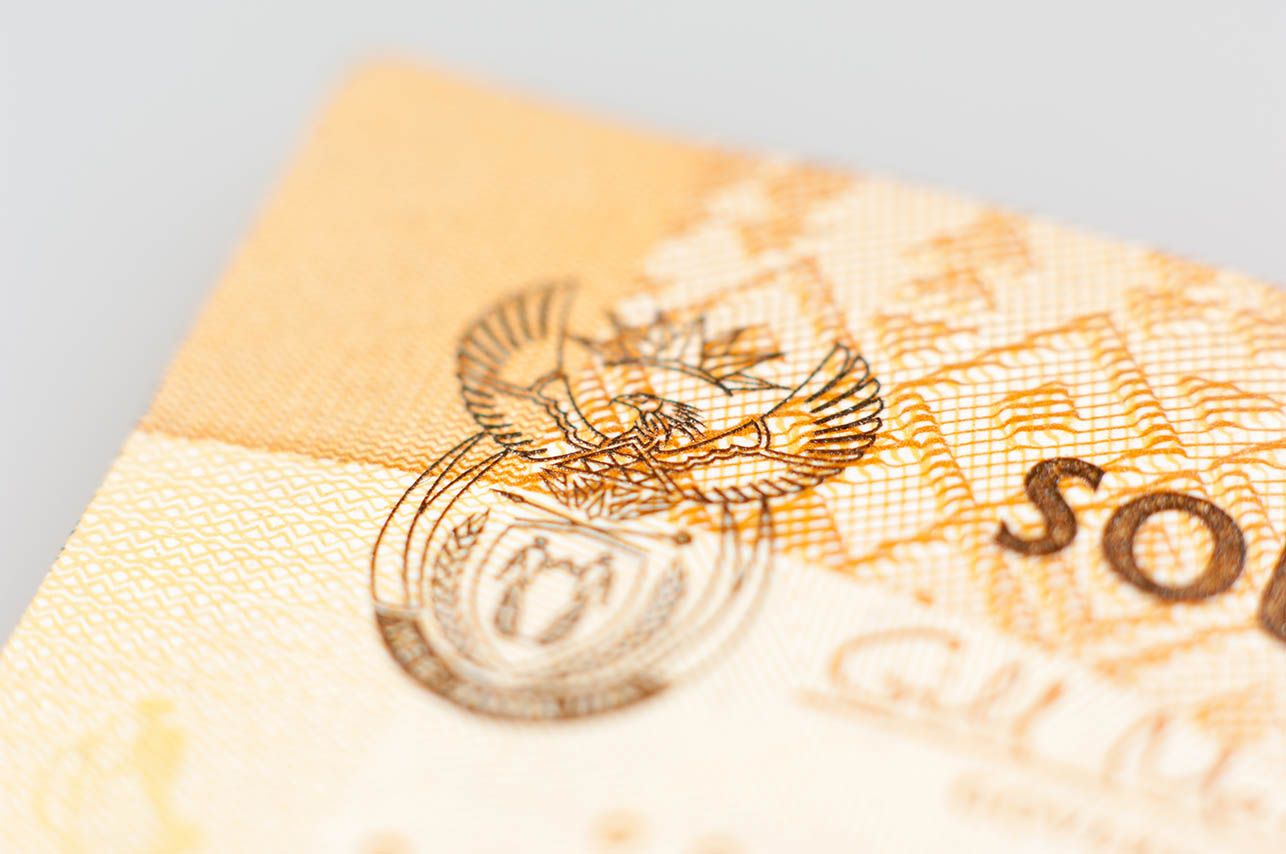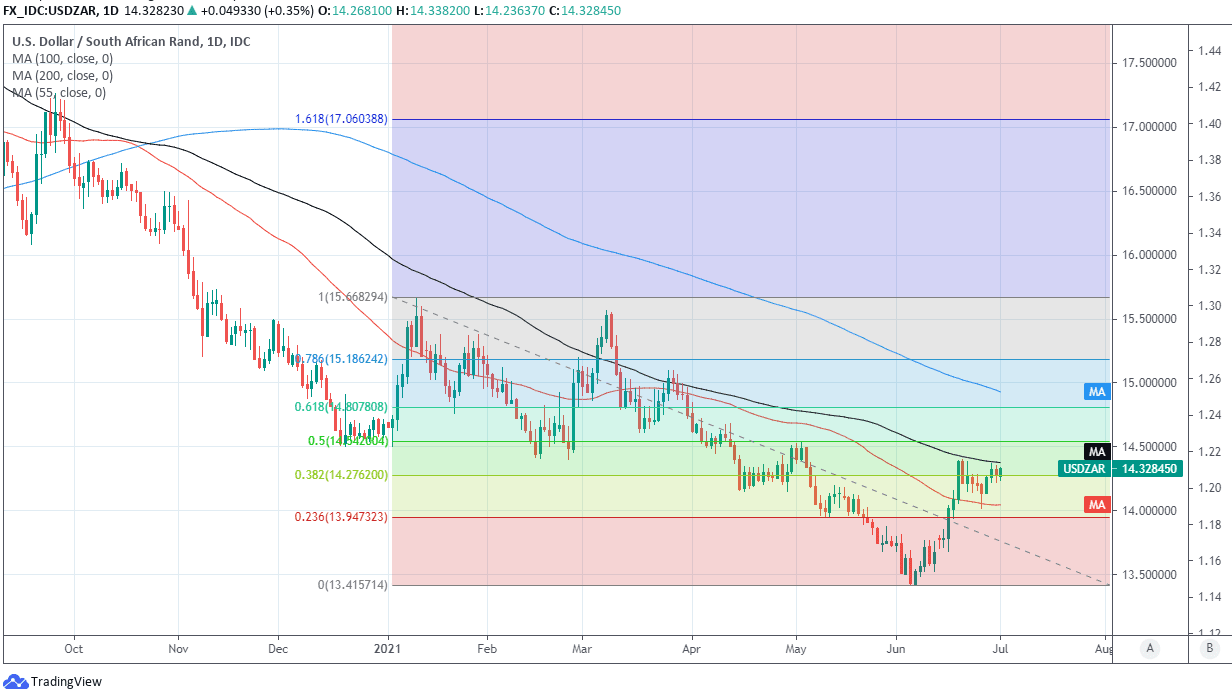South African Rand, Other Emerging Markets Seen Weathering Fed Policy Shift
- Written by: James Skinner
-
- ZAR seen holding onto 2021 gains after consolidation
- As emerging market FX weathers shift in Fed outlook
- Aided by better financial fundamentals, policy support

Image © Adobe Images
- GBP/ZAR reference rates at publication:
- Spot: 19.86
- Bank transfer rates (indicative guide): 19.17-19.31
- Transfer specialist rates (indicative): 19.68-19.72
- Get a specialist rate quote, here
- Set up an exchange rate alert, here
The Rand could be set to hold onto much of this year's gains over international counterparts if-not build them further if emerging market currencies continue to weather a perceived shift in the outlook for Federal Reserve (Fed) interest rates as well as they have done so far.
South Africa’s Rand remained an outperformer of developed and emerging market currencies alike for 2021 on Thursday even after signing off on its worst month for over a year this week as it entered July in consolidation mode against the Dollar, Pound and others.
The Rand was caught out by June’s U.S. Dollar rally and on Sunday when President Cyril Ramaphosa announced that the country would be moving up the ‘lockdown’ ladder in response to a third wave of coronavirus infection, both of which helped stall an otherwise strong 2021 recovery trend.
Level four restrictions came at the tailend of a month in which the Dollar has responded enthusiastically to indications from the Fed that its interest rates could eventually rise sooner than was previously guided for.
But even after last month’s losses the Rand still enters July with gains over all of the G10 currencies except the Canadian Dollar for the 2021 year-to-date. and having risen against all of its nine largest emerging market counterparts except the Brazilian Real.
The Rand also benefits from fundamentals that have turned unusually supportive in recent quarters and which have continued to underwrite the South African currency early in the new month even as the Dollar attempts to extend its own tentative comeback.
“Fundamentals remain supportive, with commodity prices – a crucial input in our fair value model – continuing to recoup mid-month losses. In isolation, spot rand’s recent weakness, and the resultant uptick in short-dated implied volatility, is most likely an overdue correction after its extended move below USD/ZAR14.00,” says Nema Ramkhelewan-Bhana, head of research at Rand Merchant Bank.
“On an intraday basis, 14.25 appears to be an important balancing point as the US dollar index holds advances with the currency pair’s 100-day moving average of 14.39 serving as a pivotal resistance level,” Ramkhelewan-Bhana adds.
Above: USD/ZAR shown at daily intervals with Fibonacci retracements of March decline and selected moving-averages.
Secure a retail exchange rate that is between 3-5% stronger than offered by leading banks, learn more.
South Africa’s Rand pushed the all-important USD/ZAR rate -14.5% lower from 15.55 to 13.29 between early March and the opening of June, after which the U.S. Dollar began to pare losses against all developed and emerging world counterparts including the Rand.
But South Africa is still a direct beneficiary of this year’s large increases in commodity prices, which helped to convert cumbersome goods and services trade deficits to surpluses and have lifted many model-derived estimates of ‘fair value’ for the Rand.
Many of these commodity prices have held up even in the face of the Dollar’s attempted recovery and so continue to underpin the Rand, alongside a cluster of technical support levels that are acting as resistance for USD/ZAR around 14.39 on the charts amid the nascent Dollar rebound.
“It has been nearly two weeks since the June FOMC meeting and despite the hawkish tone, EM FX weakness has not been as aggressive as some may have feared. Indeed, some EM currencies have even strengthened versus the USD,” says Paul Mackel, head of emerging markets FX research at HSBC.
{wbamp-hide start}
{wbamp-hide end}{wbamp-show start}{wbamp-show end}
“The backdrop for these currencies is not the same as during the 2013 ‘Taper Tantrum’. EM FX does not exhibit the same vulnerabilities when considering their improved external accounts and foreign investor positioning in EM, which is less stretched than in the past. Meanwhile, FX valuations are less of an issue. Most of the commodity-type currencies such as the RUB and LatAm currencies were overvalued versus the USD in 2013, which is not the case right now,” Mackel writes in HSBC’s latest review of emerging market currency performances and prospects.
Mackel and the HSBC team cite better current account balances, which reflect among other things a lessening dependence on external financing, for improving valuations that are helping to keep many emerging market currencies including the Rand supported this year and even as the coronavirus pandemic still looms large over developing countries which often have large populations and are all hampered by limited access to vaccines.
This year's new current account surplus is one highly supportive factor for the Rand, although the South African unit may also benefit over the coming quarters from the optionality that South African Reserve Bank (SARB) policymakers now have over interest rates that have been held steady at 3.5% lately as the economy enjoys a rare period of subdued ‘underlying inflation pressures’.
Above: Pound-to-Rand rate shown at daily intervals with Fibonacci retracements of March slide and selected moving-averages.
“Core inflation only reached 3.1%. That means that pressure to act is not yet that high and the SARB might well take its time with a first rate hike,” says You-Na Park-Heger, an analyst at Commerzbank.
Many emerging market currencies have been lifted of late by central banks which have begun raising interest rates in order to ward off inflationary price increases that have been larger in parts of Latin America and Central and Eastern Europe as they have in South Africa where the core measure of inflation - which overlooks changes in energy prices - came in at the lower end of the SARB’s target band in May.
The Rand’s outperformance is one of the likely factors keeping South Africa’s underlying inflation rates contained as the double-digit percentage gains of recent months will have reduced the cost of imported goods, services and financing.
This low core inflation has in turn enabled the SARB to take a back seat as others lift borrowing costs, in the process giving Governor Lesetja Kganyago and colleagues an opportunity to save policy ammunition that could then be used to support the economy and currency at a later date.
Recent declines in inflation will have enhanced the real terms value of South African government bonds yields that have always been comparatively high in international terms, not to mention successful at luring international investors this year already.
“With the rand seemingly in no man’s land and the Northern Hemisphere gearing up for the summer holidays, flows into the nominal bond market are unsurprisingly quiet,” Ramkhelewan-Bhana writes in commentary on Thursday. “According to National Treasury (NT), the combined foreign holdings (fixed-rate and inflation-linked) of government bonds increased to 30.5% in May from 29.9%.”
Above USD/ZAR shown at monthly intervals with Fibonacci retracements of 2018 slide and selected moving-averages.

